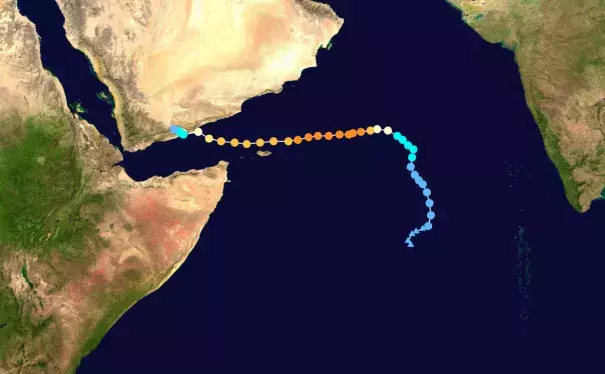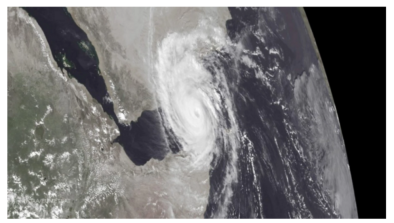Cyclone Chapala 2015
The 2015-2016 extreme El Niño fueled, and global warming boosted, the record warm ocean temperatures that fed Cyclone Chapala—Yemen’s first hurricane strength cyclone on record.





Rare Arabian Peninsula cyclone landfall fed by record ocean warmth
Cyclone Chapala made landfall in Yemen as a Category 1 storm making it the first ever hurricane strength cyclone on record to hit the nation. The storm was able to maintain hurricane-strength after peaking as a top-end Category 4 cyclone with 155 mph winds due to record warm ocean temperatures in the Arabian Sea.
Chapala hit land 44 miles southwest of Al Mukalla, Yemen’s fifth largest city at 300,000 people, bringing dangerous storm surge, torrential rain, flooding and mudslides to a region unfamiliar with storms of this magnitude. The storm affected up to 1.1 million people and displaced more than 36,000, according to the United Nations Office for the Coordination of Humanitarian Affairs. Before hitting the mainland, Chapala made a direct hit on the Yemeni island of Socotra, taking three lives.
Prior to Chapala, Cyclone Gonu in 2007 was the only hurricane-strength cyclone in modern records to affect the Arabian Peninsula, and there are only four observations in the scientific literature of tropical storm surge or storm tide in the Arabian Sea.
Chapala may signal more than ocean warming
-
Climate projections show a substantial 46 percent increase[1] in cyclone frequency over the Arabian Sea by the end of the century
-
Climate change loads hurricanes with additional moisture, intensifying rainfall and raising the risk of flooding
-
There is strong evidence that climate change increases the frequency of the most intense cyclones[2], the winds of which incur exponentially greater damage compared to lesser cyclones
-
Due to the combined impact of an extreme El Niño and climate change, 2015 was a record year for tropical cyclones in the Northern Hemisphere
Related Content









